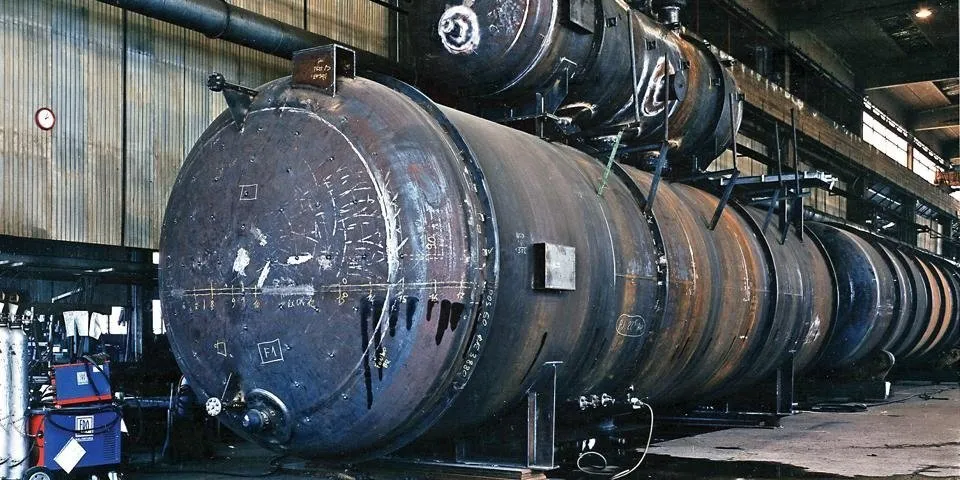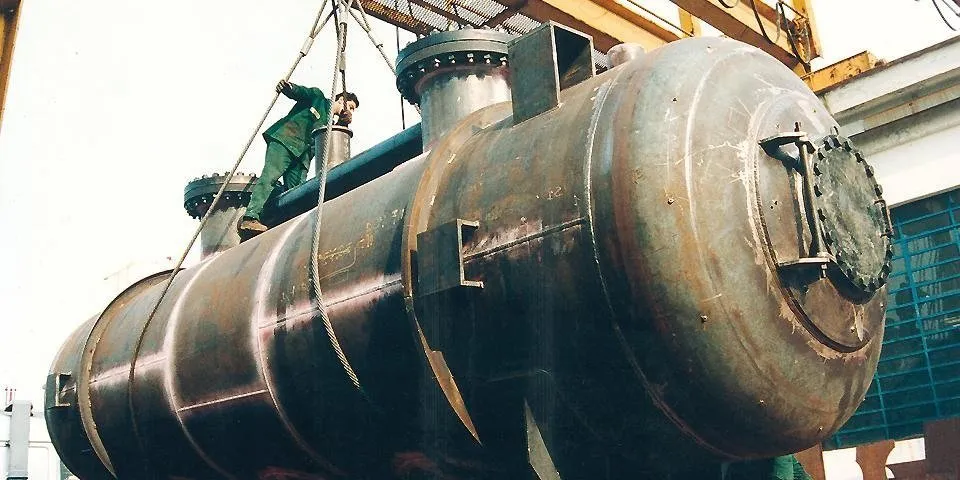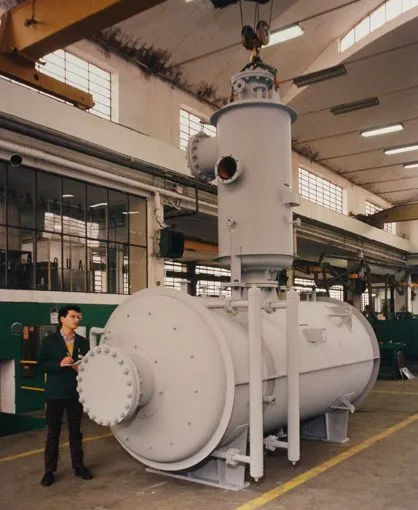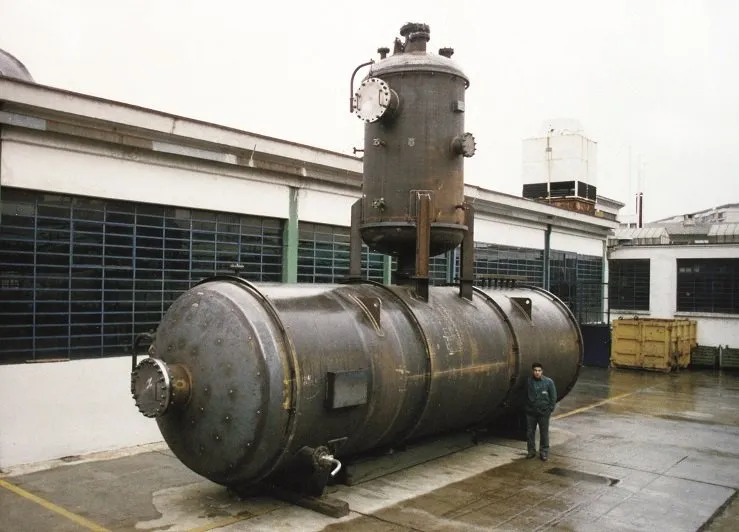The first SCAM deaerators , adopting patented devices, have been manufactured at the end of the 30’s.
The experience acquired since that time has been very important in reaching the present manufacturing level that sees SCAM at the top of the state-of-the-art in the field of degassing plants, thanks to a very low oxygen residual content and to a very high adaptability to variations occurring in the flow of the water to degas.
Historical Outline
SCAM started designing and manufacturing the first degassing plants at the beginning of the ’20ies, adopting, from that time on, patented devices that allowed:
1) The complete mechanical spraying of the water to degas;
2) The heating of this water by using exhausted steam with relevant advantages for the plant thermal performances;
3) The “flashing” of drops in contact with the tubes where the steam runs, thus supporting the separation of the contained gases;
4) The realization, into the deaerator under vacuum, of a vacuum comparable to the theoretical one;
5) The setting of the water load to degas according to the requirements of the feed pump.
The experience acquired during years of activity, thanks to many plants manufactured in Italy and abroad, has been very important for achieving the present manufacturing range that sees SCAM at the top of the state-of-the-art in the field of water degassing plants.
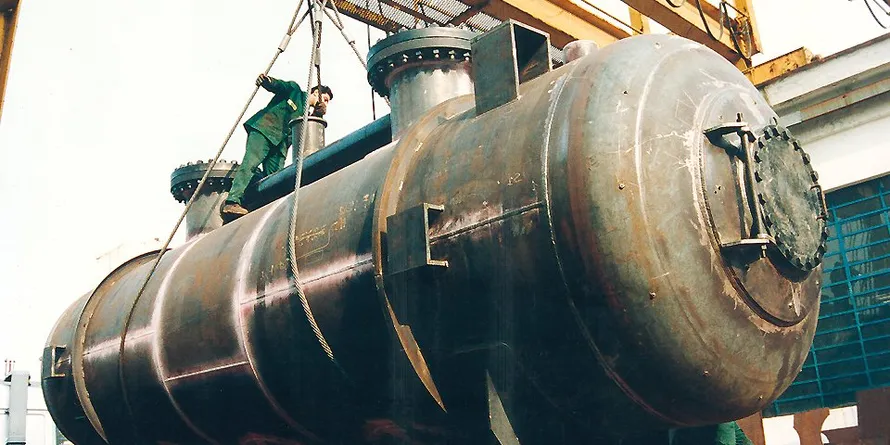
Characteristics
SCAM deaerators are different from traditional plants since they use a type of dispersion with discs and rings – designed in order to realize the max. mixing between water and heating steam – and especially the spraying system. The water to degas is lead into a water box, where the spraying system is installed in the lower part.
The system consists of a set of stacked discs so that to form a vertical cylinder keyed, in the lower part, by a flat plate and tied in the upper parts on the bottom of the inlet water box. The water enters the vertical channel formed by the discs and is sprayed in very thin blades through the available space existing between every two discs. The spraying is constant and independent from the water flow. Actually, every disc consists of an elastic ring connected, by means of spokes, to a central hub.
The spokes of two following discs are shifted one to the other and the discs are separated by an elastic ring put on the spokes. Thus, this ring acts as a spring that tends to open the lip formed by two discs. Ali discs are stacked on a central shaft connected to an helicoidal spring placed in the water inlet box. Without pressurized water, the helicoidal spring keeps all discs in closed position.
With water under pressure, the spring is compressed and the lip of every disc opens. The opening port is equal for all discs thanks to the elastic rings. The design of the helicoidal spring is executed in order to have fixed pressure losses for the min. and the max. operation flows. Thus, the spraying is constant for all the range of feed water flows.
